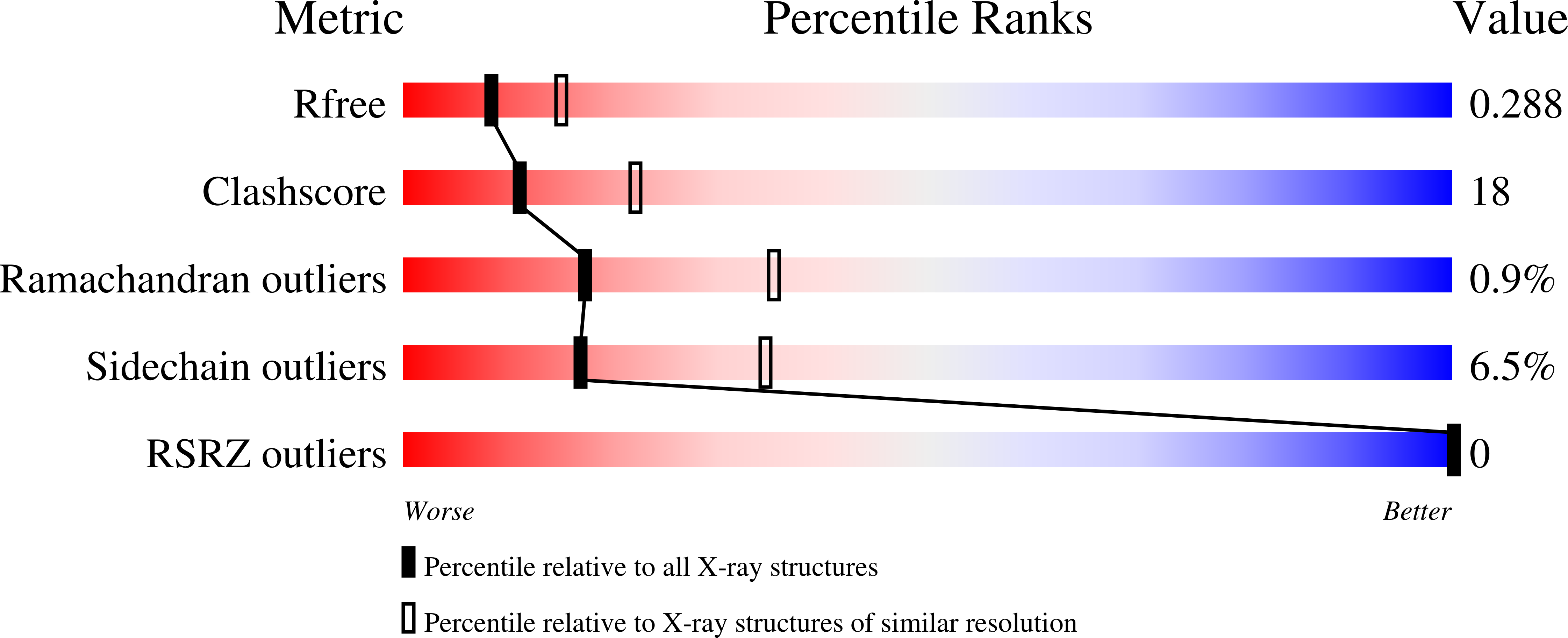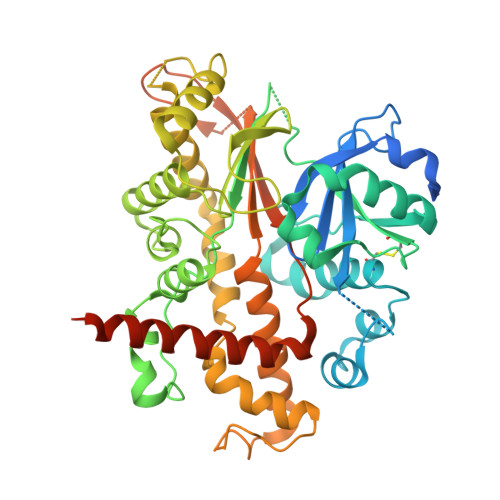Conformational stability of inositol 1,3,4,5,6-pentakisphosphate 2-kinase (IPK1) dictates its substrate selectivity.
Gosein, V., Miller, G.J.(2013) J Biol Chem 288: 36788-36795
- PubMed: 24165122
- DOI: https://doi.org/10.1074/jbc.M113.512731
- Primary Citation of Related Structures:
4LV7 - PubMed Abstract:
Inositol 1,3,4,5,6-pentakisphosphate 2-kinase (IPK1) converts inositol 1,3,4,5,6-pentakisphosphate(IP5) to inositol hexakisphosphate (IP6). IPK1 shares structural similarity with protein kinases and is suspected to employ a similar mechanism of activation. Previous studies revealed roles for the 1- and 3-phosphates of IP5 in IPK1 activation and revealed that the N-lobe of IPK1 is unstable in the absence of inositol phosphate (IP). Here, we demonstrate the link between IPK1 substrate specificity and the stability of its N-lobe. Limited proteolysis of IPK1 revealed that N-lobe stability is dependent on the presence of the 1-phosphate of the substrate, whereas overall stability of IPK1 was increased in ternary complexes with nucleotide and IPs possessing 1- and 3-phosphates that engage the N-lobe of IPK1. Thus, the 1- and 3-phosphates possess dual roles in both IPK1 activation and IPK1 stability. To test whether kinase stability directly contributed to substrate selectivity of the kinase, we engineered IPK1 mutants with disulfide bonds that artificially stabilized the N-lobe in an IP-independent manner thereby mimicking its substrate-bound state in the absence of IP. IPK1 E82C/S142C exhibited a DTT-sensitive 5-fold increase in kcat for 3,4,5,6-inositol tetrakisphosphate (3,4,5,6-IP4) as compared with wild-type IPK1. The crystal structure of the IPK1 E82C/S142C mutant confirmed the presence of the disulfide bond and revealed a small shift in the N-lobe. Finally, we determined that IPK1 E82C/S142C is substantially more stable than wild-type IPK1 under nonreducing conditions, revealing that increased stability of IPK1 E82C/S142C correlates with changes in substrate specificity by allowing IPs lacking the stabilizing 1-phosphate to be used. Taken together, our results show that IPK1 substrate selection is linked to the ability of each potential substrate to stabilize IPK1.
Organizational Affiliation:
From the Department of Pharmacology and Therapeutics, McGill University, Montr¨¦al, Quebec H3G 1Y6, Canada.


















